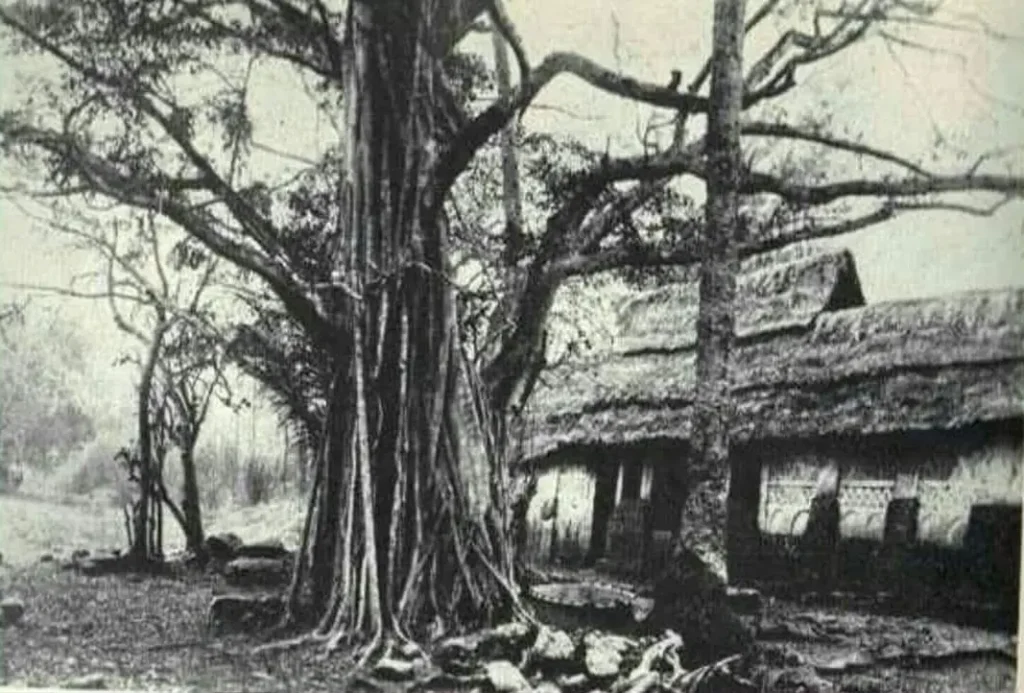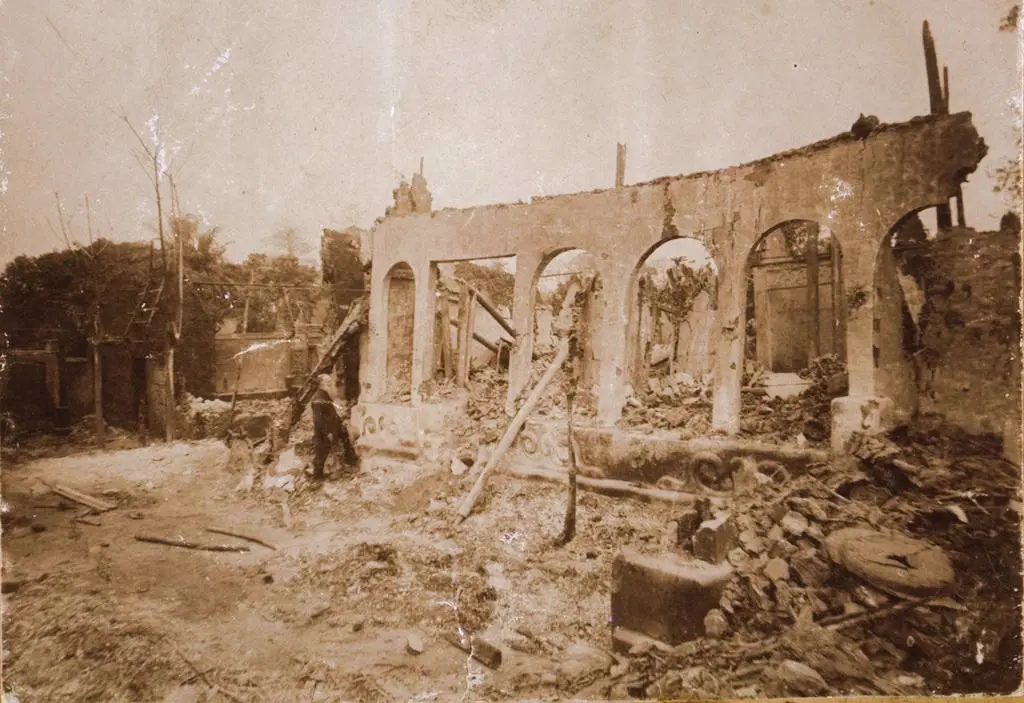Bantama Mausoleum in Kumasi: Sacred Ashanti Heritage

There’s something magnetic about Ashanti history in Kumasi, especially for those trying to connect with stories that stretch back generations.
The Bantama Mausoleum often draws interest from people who want more than surface-level sightseeing.
Although it is not a tourist site open to the public, its history and significance continue to attract attention from locals and visitors interested in Ashanti heritage.
Finding places that feel genuine isn’t easy, especially with a full itinerary. The Bantama Mausoleum stands out for locals and travelers who want to dig into the Ashanti Kingdom’s roots.
Whether you’re curious about ancient customs, fascinated by tradition, or simply eager to experience something that matters, this site is one of the true gateways to Ashanti heritage.
In this post, you’ll get a glimpse into the mausoleum’s past and the culture it protects.
You’ll also get practical tips for planning your visit, advice on what to look for during your trip, and ideas to help you make the most of your time here.
If you want to leave Kumasi with more than just pictures, the Bantama Mausoleum can help you feel the weight and pride of Ashanti history in your own journey.

Struggling to Keep Track of All Your Kumasi Adventures? No worries!
With so much to see, do, and learn in Kumasi, it’s easy for the details to get lost. Want to make the most of your explorations? Then you need this FREE Kumasi Journal Set!
It’s perfect for recording your favorite spots, and cultural experiences, and even learning key Twi words and phrases to deepen your connection to Kumasi. Whether you’re a local or a visitor, this journal makes every moment count.
The Rich History of the Bantama Mausoleum
Right in the Bantama neighborhood, the mausoleum stands proud as a keeper of the memory of Ashanti royalty.
You feel the weight of centuries here, with each tradition still echoing through daily life. This is not just a structure but a living record of the Ashanti’s fight to protect their roots through good times and hard ones.

Origins and Cultural Significance
The Bantama Mausoleum gets its meaning from more than stones and wood. Its story begins with the legendary Kum tree, the same tree where King Osei Tutu, the founder of the Ashanti Kingdom, once met his advisers.
The spot became the heart of royal decision-making and soon became the resting place for kings and queens who led the Ashanti through some of their most significant moments.
Located in Bantama, the historic center of Kumasi, this site draws its spiritual power from its deep roots in Ashanti tradition.
For centuries, Bantama has been the go-to place for royal rituals, especially during ceremonies like the Banmu.
This ritual marks an important part of the royal funeral process, with faith, respect, and family loyalty at its center.
Locals see the mausoleum as more than a graveyard. It is a symbol of the Ashanti’s unity, leadership, and belief that ancestors continue to guide everyday life.
Key cultural features you’ll notice:
- Statues and carvings that honor past rulers.
- Sacred relics used in traditional rites.
- Families still hold remembrance ceremonies here to connect with their royal past.
Learning about the Bantama Mausoleum connects you to the footsteps of the Ashanti leaders who shaped Ghana’s largest kingdom. The site ties together stories of sacrifice, power, and hope.
Local Stories About the Bantama Mausoleum
If you speak about the Bantama Mausoleum, many people will recall tales they were told as children. Some heard that entering the building, even to help someone, would lead to death.
Others remember being warned that touching the walls could make them vanish. Walking to school, these stories made the mausoleum a place of fear and caution.
These are tales, not facts, but they show how strongly the site has been marked with mystery and respect in local memory.
Families passed down these warnings as a way of teaching younger generations to keep their distance from the sacred ground.

The Impact of Colonial Destruction
History took a dramatic turn for the mausoleum on January 20, 1896. British forces, trying to break the Ashanti spirit during the Fourth Anglo-Ashanti War, burned the original structure.
Soldiers aimed to wipe out not just a building but the heart of Ashanti resistance. This act deepened the rift between the Ashanti people and the colonial authorities, sparking new efforts to defend traditions.
💡Historical Note: In earlier times, royal rituals at Bantama could include large-scale offerings and sacrifices, practices outsiders later called the “Bantama ritual.” The British cited these practices as one reason for destroying the site in 1896, portraying it as a place of “huge sacrifices.” While these accounts are part of the colonial record, the mausoleum is remembered today as a royal ritual site and a symbol of Ashanti resilience.
The British attack did not erase the mausoleum’s value. Instead, it fired up a strong sense of purpose in Ashanti communities.
People rebuilt the site, piece by piece, turning it into a symbol of their refusal to let colonial history change who they were.
Here’s how the burning shaped the legacy of the Bantama Mausoleum:
- Reconstruction became an act of reclaiming identity.
- Families pushed to save royal regalia and relics before the fire.
- Later generations used the site as a rallying point, keeping the memory of Ashanti leaders alive.
While the mausoleum’s scars from colonial conflict remain, its regeneration proves how strong Ashanti heritage can be.
Quick facts at a glance:
| Year | Event | Significance |
|---|---|---|
| c. late 1600s | Site linked to Kum tree and Osei Tutu | Birthplace of Ashanti leadership and tradition |
| Ongoing | Rituals like Bantama Banmu | Highlights spiritual link to Ashanti royalty |
| 1896 | British destruction | Key event in colonial history and resistance |
| Late 1890s | Site rebuilt by Ashanti | Example of community-led cultural recovery |
Ritual Place and Burial Place
A key detail to make clear is how the rites work. The mausoleum is used for rituals and remembrance. In many cases, the final burial does not take place inside the Bantama mausoleum.
Rituals happen there, and then the procession moves to burial grounds like Breman Banmu, where the actual interment takes place.
This helps explain why local stories treat Bantama as sacred and have limited access to it.
Exploring the Bantama Area Today
Stepping near the Bantama Mausoleum offers a quiet contrast to the energy of Kumasi. The landmark and its grounds remain sacred.
The peaceful area and careful design invite quiet respect. From the thick walls marked with royal symbols to the clear rules set by caretakers, the site still reflects Ashanti values.
Key features visitors will see from outside or nearby:
- Low, solemn architecture and simple design meant for reflection.
- Signs and murals that explain parts of the history.
- A marked boundary that keeps burial and ritual areas private.
Rituals for the Asantehemaa continue today, led by palace elders. Only a few people ever witness the full rites. The setting holds a stillness that many locals protect.
The Vibrant Bantama Neighborhood
Right outside the mausoleum, Bantama is filled with daily life. It is one of Kumasi’s most active neighborhoods.
The open-air Bantama Market sells spices, produce, fabrics, and crafts. If you like sights, smells, and sounds that fill your senses, this is a good place to wander before or after your time nearby.
Festivals sometimes bring drumming and traditional dance to the streets. During these events, you will see people in kente and other bright cloths. Bantama reflects both Kumasi’s history and its everyday life.
To get the whole experience:
- Pause near the mausoleum for a moment of quiet reflection from outside.
- Walk through the Bantama market to find fresh food and Ashanti crafts.
- Time your visit around festivals if you want to see public dance and music.
This mix of sacred and everyday energy makes Bantama a rich stop for anyone learning about Ashanti landmarks and life in Kumasi.
Practical Guide for Visitors
The site is near the city center. You can see parts of it from the public road and nearby areas, but you should not expect open access to the burial areas.
💡Access to the Bantama Mausoleum
Many assume they can enter the Bantama Mausoleum, but that is not the case. It is not a tourist site and is not open to the public. At most, you may see the outer structure from the road or nearby paths, but access to the ritual grounds is restricted. The space continues to serve sacred purposes and is not set up for visitors.
Getting There and Access Information
- The mausoleum is easy to reach from central Kumasi. Start at Kejetia Market. From there, take a taxi or hop on a trotro heading north toward Bantama. It is about a 10-minute drive.
- Look for signs near the Kumasi Cultural Centre. You will see markers and information boards outside.
- Important: The mausoleum is not open for public entry. Do not plan to enter the inner compound. Respect boundaries and any posted rules.
- Photography: Ask before photographing people, carvings, or ritual objects. Do not try to take photos inside restricted areas.
| Route | Distance | Transport | Estimated Time | Cost (GHS) |
|---|---|---|---|---|
| Kejetia Market | ~2 km north | Taxi | 10 minutes | 15–25 |
| Kejetia Market | ~2 km north | Trotro | 15–20 minutes | 3–5 |
Tips for a Respectful Experience
- If you want context, hire a local guide or visit Manhyia Palace Museum and the Kumasi Cultural Centre. Guides can explain what happens at Bantama without crossing boundaries.
- Support local stall owners if you buy crafts or snacks. This helps caretakers and the neighborhood economy.
- If a ceremony is happening, give space and do not approach the ritual area. These rites are private and meaningful.

The Bantama Mausoleum is a powerful marker of Ashanti history and pride. It is a ritual place. It is a place of memory and of rules.
Seeing the area gives you a clearer view of how tradition and daily life meet in Kumasi. If you want real context, pair a visit to Bantama with the Manhyia Palace Museum and the Kumasi Cultural Centre.
That will help you leave Kumasi with a fuller understanding, not just pictures.
Download your free Explore Kumasi journal, subscribe to the newsletter for more heritage tips, and share your stories below. Respect the rules, listen to local guides, and keep these memories close.
Bantama Mausoleum FAQ
Is the Bantama Mausoleum open to the public?
No. Many people assume it is open, but the burial and ritual areas are private. You can view parts from outside and learn more from local guides and nearby museums.
Do I need to book a guide in advance?
Guides are not required, but hiring a trusted local guide is the best way to learn the history while respecting the site and the surrounding areas.
Can I take photos inside the mausoleum?
No. Photographing inside the restricted burial and ritual areas is not allowed. Always ask before photographing outside areas or people.
Are bodies buried at Bantama?
Rituals and remembrances happen at Bantama. Final burials are often held at the burial grounds, such as Breman Banmu, where the interment takes place after the ritual rites.
AKWAABA!! IF THIS POST CAPTURED YOUR ATTENTION, KEEP EXPLORING KUMASI WITH US AT ExploreKumasi.com. Yɛdaase!
You’ll find cultural guides, historical insights, and travel resources to help you experience Kumasi and the Ashanti Region more deeply.
💬 Want to stay connected? Join our community on Facebook to share your thoughts and discoveries.
📌 Inspired by what you read? Pin an image to come back later or share with someone planning their own Kumasi journey.
Thank you for exploring with us.






